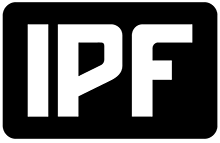There are many ways to become environmentally friendly. It doesn’t matter where you live, just look around and think about where you can make a difference.
Paper is a clear example of what continuously harms our planet at an overwhelmingly rapid rate. For instance, producing 10 million pages costs 2,500 trees. Statistics such as these make us wonder why we’re asked to turn in hard copies of 20-page dissertations, or why we receive endless copies of bank statements in the post.
According to the US Environmental Protection Agency, not only are we cutting down alarming numbers of trees for the production of paper, we are also simultaneously using thousands upon thousands of gallons of oil and kilowatts of energy to produce these very same sheets of paper.
World Paper Free Day (WPFD) was celebrated on 6 November. The initiative was started by AIIM (Association for Information and Image Management) in 2010 with the aim to encourage people and businesses to go paper free for one day. Peggy Winton, Vice President and Chief Marketing Officer of AIIM, talked to us about how they’ve been educating and advising businesses on reducing their paper consumption.
After speaking with Winton and hearing her advice for businesses, we’ve put together a list of five easy steps that businesses can take to cut down on paper wastage, as well as be smarter about their daily paper usage.
- Be considerate of the invoices you send out
An invoice focuses on the financial and accounting aspect of any organisation, large or small. This process is commonly known as “back-office processing”. It’s comprised of paper documents like accounts payable, expense reports for employees and other invoices coming into the business. AIIM International advises businesses to be mindful and cautious about the amount paper flowing in and out. Winton said:
“If it’s in paper it’s going to likely come back to you in paper, so you know you’re part of the problem if you perpetuate that.”
- Adopt a process and not a technology mindset
AIIM tries to encourage businesses to become aware of (and regulate) the amount of paper that enters the business in all departments. Especially instances when it slows functions down, clogs up the workspace or when it restricts information access. Winton underlined how this is an important process because, despite the current generation being extremely tech savvy.
The problem is “the rest of the working world”. Many find it difficult to adapt to new technologies because it disrupts the “legacy of a paper-centric environment” that they’re familiar with. Therefore, strictly monitoring the usage of paper within a business can also contribute towards reducing consumption.
- Make use of available technologies
Businesses today have the option to implement a new technology called ‘Recondition and Extraction’, which enables them to trace specific information from a scanned document. This specially designed can recognise a signature or surname that almost all legal documents require, such as a credit card application or a loan document.
Winton explained how the advantage here is that the documents can’t be destroyed. More interestingly, she noted:
“The information stored in one document can actually be used to populate other documents in a process, and that’s a wonderful way to achieve efficiency and productivity without producing additional paper.”
- Implement some quick whims
Even though using paper is the oldest and most common method to share ideas, today we have the ability to eliminate it entirely. Yes, that’s right, digitisation. Although many of today’s functions are being digitised, it simply isn’t happening quickly enough. A sensible solution for change would be to start changing our own habits. As Winton explains:
“That’s another crazy thing – a lot of documents are born digital anyway, and yet someone is scanning them, making a copy, printing that copy and then potentially storing that paper copy; when it was born digital to beginning with. I mean that just insanity, really insanity.”
Instead, she suggests businesses could “kick a paper-free process to trial”. One could start with digitising accounts payable, and then make sure that the process is scalable. Once you have successfully implemented the concept in one department, you can begin to think about moving it to other areas within the organisation.
- Appreciate and understand the law
It is costly for an enterprise to use paper, but getting rid of it requires investing even more money. Recently, the law adopted the “digital signature” as a proof of authenticity and integrity. Technology is making it easier for us not to use paper, but traditional mind-sets struggle to adapt to these changes, as explained by Winton:
“There is a belief that’s actually a misconception that they need a ‘wet-signature’ approval on certain papers and records and that’s not true.”
By accepting and testing the changes made, businesses could regularly update their systems to make a real difference, which could be beneficial for both the younger and older generations of an organisation.
During our discussion, Winton stated:
“Only 22% of all the organisations we poll have any conscious pro-active policy to reduce paper.”
As youngsters, the first step to solve this ever-growing problem is to challenge these statistics. Question your educational institutions, your banks, your local grocery stores or whoever the next paper-eating monster is that comes your way.
On World Paper Free Day 2015, IPF partnered with AIIM to bring our readers educational content about the logistics behind going paper-free. Read more from our ‘Paper Free’ feature here.

